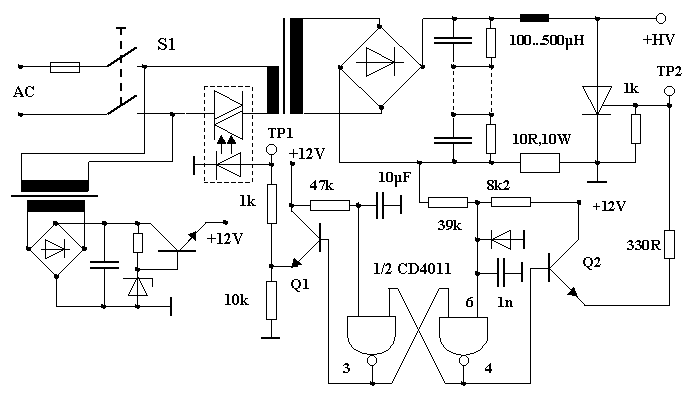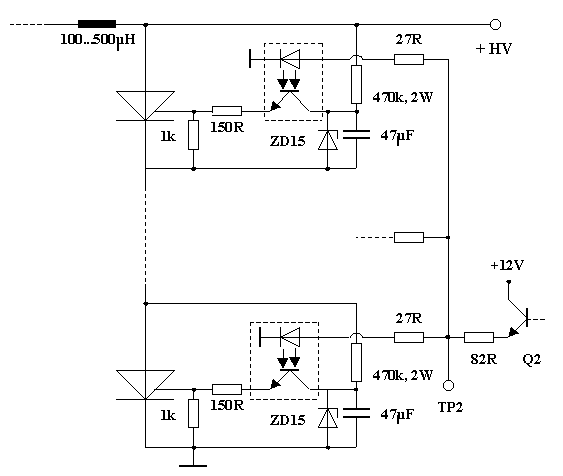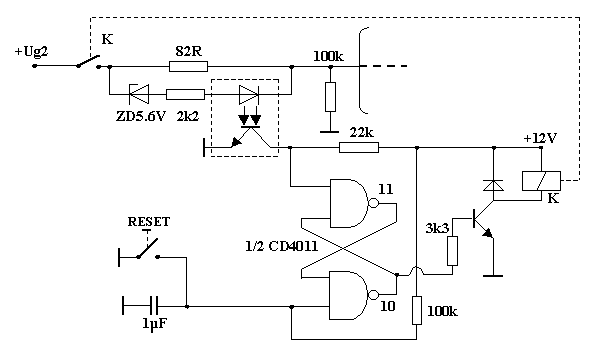OE5JFL has implemented the same idea for quenching the HV discharge current as I wrote about back in approx 2012. The idea is to short the anode PSU caps thru an inductor and a solid state device when an overcurrent event thru the tube occurs. The inductor prevents the current to raise to dangerous levels as the inductor tries to prevent the current dI/dt by building a magnetic field.

The above figure1 shows OE5JFLS thyristor circuit and 100-500uH inductor

Thyristors for voltages >1000 Volts are very expensive. For higher voltages you can use a cascade as shown above in Figure 2. I use four thyristors in series, switched by optocouplers, in my 3.5kV supply.

Figure 3 above shows a circuit for screen protection sreen in case of no anode voltage or screen overcurrent. Ig2>100mA will toggle the Flip-Flop via the optocoupler. The relay goes off and disconnects the screen. Voltage comes back after pushing the RESET key. Using the ordinary Z-diode stabilisation, overcurrent is limited to a harmless value during switching delay of the relay.
Overcurrent trip: High current in anode circuit caused by arcing or short circuit generates voltage drop across 10Ohm resistor. Flip-Flop toggles (Pin 3 low), switches off transformer and fires SCR to short HV capacitor.
For restart one has to switch off S1, the main power supply switch, and switch it on again after a few seconds. The series inductance for SCR protection is made from 10m of enamelled copper wire. Trip current is set by the 39k/8k2 voltage divider.
Before you test the circuit by producing a short, you should follow the step by step procedure, which is outlined as follows:
- Connect TP2 to ground, switch S1 on and short Pin 6 (CD4011) to ground. ===> Transformer must be off.
- S1 on, after plate voltage coming up, ground TP1 (transformer off), and then Pin 6 (CD4011). ===> SCR must fire now and ground high voltage.
- S1 on, ground Pin 6. ===> Transformer must be off and HV must be shorted.
- After successfully completing these tests, you should short the HV output with a thin wire to ground (0.12mm). This wire must not be melted when the HV-supply is shut down by the overcurrent protection.
PROCEED WITH CAUTION, THE AUTHOR IS NOT RESPONSIBLE FOR INJURY OR EQUIPMENT DAMAGE.
Credit to OE5JFL for the schematics and writeups.
https://www.qsl.net/oe5jfl/flashover.htm


